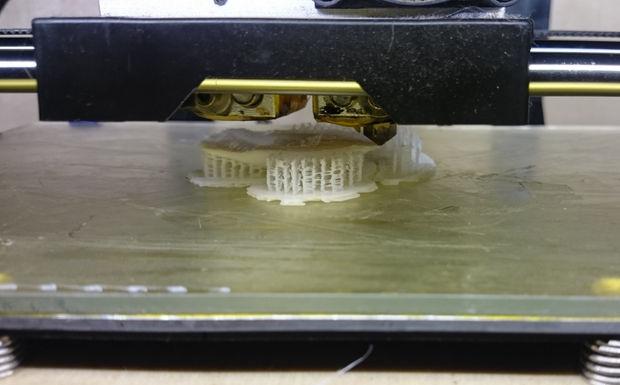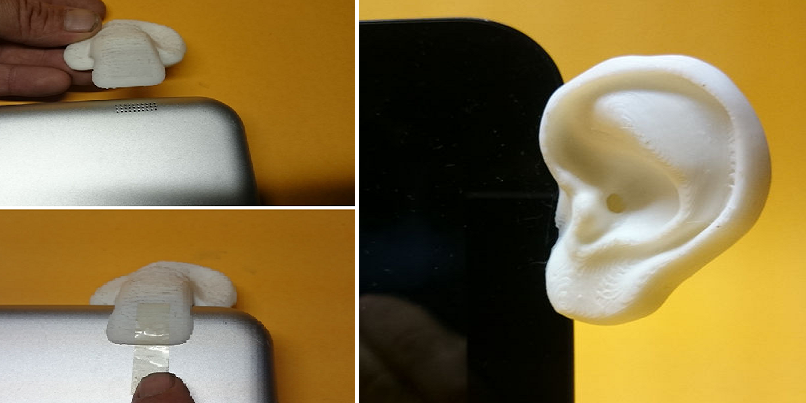
The human ear, an integral body part that has evolved through the ages for precision and accuracy in deciphering sound, displays a unique shape for a reason. In a healthy scenario, the ear diverts acoustics perfectly, functioning as a natural speaker. Its form is meant to work efficiently in routing sounds coming from multiple directions, trapping them for speedy translation as they travel into our intricately developed inner canals.
With the general theory that ‘human ear is probably the best shape for sound input,’ printhis allows that it should then translate into a superior speaker system for hardware. As we’ve pointed out before, need is generally one of the greatest motivators behind invention. Printhis’ need was to boost sound from the tablet, which offers only one speaker at the rear of the machine.
So how to insert an ear into your tablet or PC? Printhis offers you Thingiverse file as a free download so that you can 3D print your own speaker ear and go from there. Pointing out inspiration from a predecessor and another fan of the ear design, printhis also includes the Thingiverse link for you to take a gander there, as well as giving a shout-out to tpower118, who was working on a similar design a couple of years ago.
For a tablet with a 9mm thickness, printhis chose to print in PLA using supports, rafts, infill at 70 percent, and two shells. Printhis also ran into some adhesion issues at the end with the 3D printed ear sticking rather stubbornly despite using a wood glue coating on the glass print bed.
“To remove the print from the printing plate, I [used] the good old carpenter chisel,” reported printhis in the Instructable. “The chisel is a good tool to remove the supports and clean the print too.”
“I am amazed at how well the new ear on my tablet works,” says printhis. “The tablet is definitely louder and looks fabulous in my opinion–if you like the natural style.”
Printhis has also entered this work in the latest Instructables 3D printing contest, so if you like this design, make sure to like it here, and help to increase this designer’s chances of winning with this innovative 3D print.
